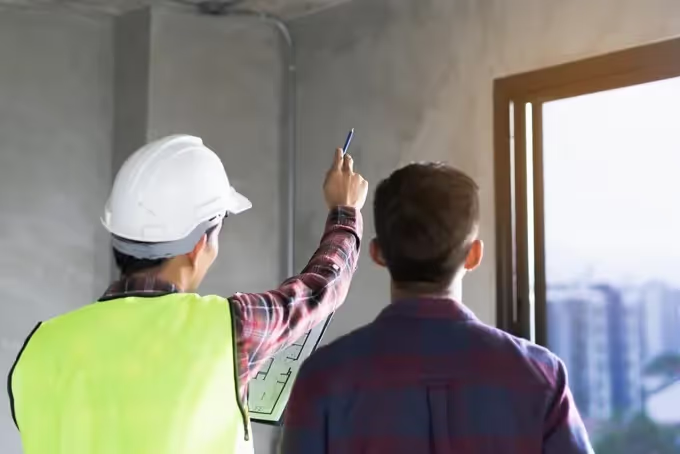Finally! Your construction project is almost finished. But what does 'almost' really mean? Enter substantial completion – the turning point to finally use your new building or structure.
Substantial completion is your green light to move in and get things up and running. But understand, it's not about everything being perfect. It's about the project being safe, usable, and meeting the major contractual requirements.
Think of it like buying a new house. There might still be a few touch-ups, but you can live there because the kitchen works, the bathrooms are finished, and the whole place won't fall. Substantial completion is the construction equivalent.
What is Substantial Completion?
Substantial completion marks the point in a construction project where the building or structure is considered complete enough for the owner to use it for its intended purpose. This doesn't mean every detail is perfect; minor items (often tracked on a "punch list") must still be finished.
Substantial completion is usually determined through a formal inspection, comparing the project to the contract and specifications. Once reached, primary responsibilities shift, warranty periods begin, final payments are made, and the owner assumes more risk for the project. This milestone is officialized with a Certificate of Substantial Completion (like the AIA G704-2017), typically issued by the project architect or engineer.

The Process of Substantial Completion Determination
Reaching substantial completion involves a systematic process where the project team, including the owner, contractor, architect/engineer, and sometimes the project manager, assess the project's readiness.
1. Review of Contract Documents
The process starts with carefully reviewing the project's contract, plans, and specifications. This establishes the agreed-upon scope of work, quality standards, and the overall criteria for completion, potentially referencing standards like those outlined by the AIA.
2. Preparation for Inspection
The contractor plays a crucial role in preparing for inspection. They ensure all construction work aligns with the contract and performance specifications. This might mean coordinating with subcontractors to wrap up loose ends and preparing the site for the project team's review.
3. Initial Inspection
The project team conducts a formal inspection and performance testing. They assess whether the completed work aligns with the contract documents and verify that all systems are up and running. This inspection covers everything from structural integrity and functionality to safety and compliance with building regulations.
4. Punch List Creation
Any incomplete or defective items found during the inspection go onto the punch list. This is the roadmap for the remaining work and a crucial tool in achieving substantial completion. Typical punch list items are minor – adjustments, aesthetic touch-ups, or final installations.
5. Resolution of Punch List Items
The contractor tackles the punch list, making necessary changes or additions to bring everything into compliance.
6. Final Inspection
Once the punch list is cleared, a follow-up inspection ensures everything has been addressed to a satisfactory standard. This final walk-through confirms the project is ready for its intended use.
7. Documentation
If all criteria are met, the architect or engineer issues the Certificate of Substantial Completion. This formal document signals the project's readiness for occupancy or use, even if some minor punch list items remain.
8. Transition of Responsibilities
Substantial completion triggers several significant shifts: warranties start, the contractor receives final payment, and maintenance and security duties often transfer to the owner.
9. Occupancy or Use
The big moment! The owner can finally occupy or start using the property. It's important to note that while substantial completion is a huge milestone, final completion – marking the absolute end of all contract work – typically comes later as administrative tasks and close-out procedures wrap up.

The Importance of Substantial Completion
Construction Completion Milestone
Substantial completion stands as a crucial milestone in any construction project. It's when the bulk of the work is done, and the focus shifts to finishing touches, inspections, and preparing for actual use. This milestone lets everyone involved evaluate progress, start planning for occupancy, and trigger key processes like warranty periods and final payments.
Certificate of Substantial Completion
The Certificate of Substantial Completion is a vital document that proves the project has reached this milestone, eases the transition to final phases, and assures the owner that it's ready for use. This certificate formally acknowledges that contractual obligations are met, clarifying timelines and responsibilities for the remaining work.
Operational Readiness and Transfer of Responsibilities
When substantial completion is achieved, the project is functional and can serve its purpose. This lets owners and end-users get ready to move in, plan operations, and handle any lingering minor issues. At the same time, responsibilities and risks usually shift from the contractor to the owner, including warranty periods and final payments.
Financial Implications
Substantial completion reached on time has big financial benefits. It optimizes resources, avoids costly delays, improves project profitability, and satisfies stakeholders. It also directly impacts how retainage or the final payment to the contractor is handled.
Legal Considerations and Risk Management
Substantial completion has significant legal implications. It ensures the project adheres to codes, permits, and regulations, minimizing liability risks and providing a framework for resolving disputes. Clearly defining who is responsible at this stage prevents conflicts and ensures any remaining issues are handled properly. Additionally, the start of warranty periods offers protection against later defects or flaws.
Conclusion
Think of substantial completion as the moment your long construction journey finally hits a smooth stretch of road. Suddenly, you see the finish line! But getting there takes more than just finishing the building itself.
Understanding substantial completion – what it means, how it's determined, and all those important documents – is key to a successful project. It's about meeting regulations, keeping everyone happy, and getting the project across the finish line the right way.
Remember, this milestone takes teamwork, following the rules, and good project management from day one. Do things right, and you'll hit substantial completion on time, on budget, and with a building everyone's proud of.













.avif)

.avif)
